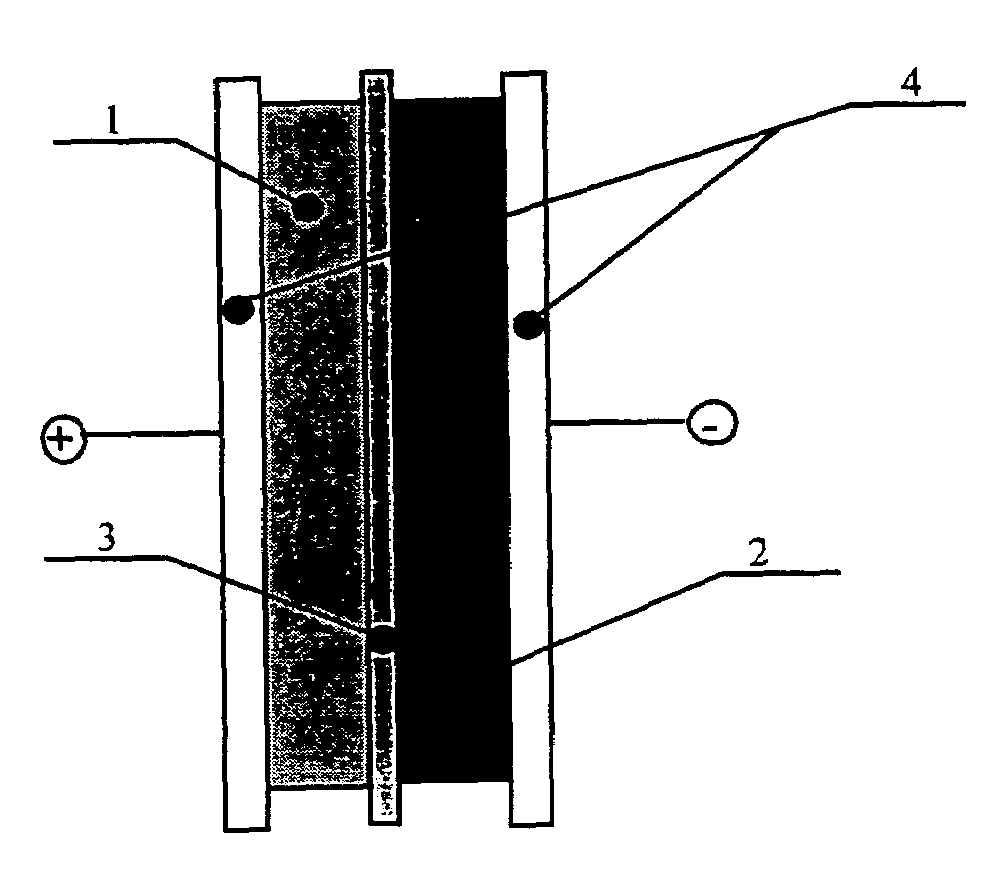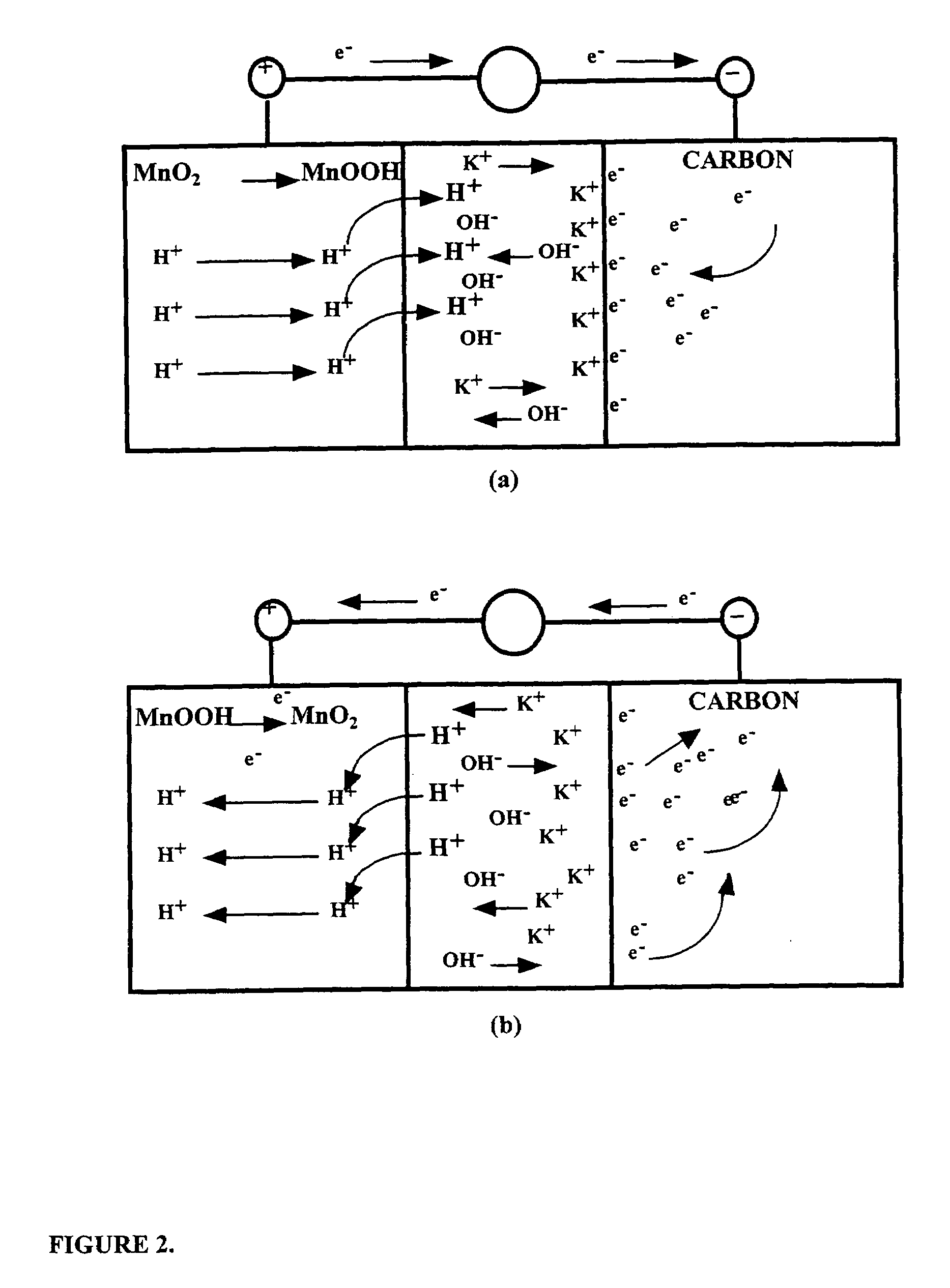Asymmetric electrochemical supercapacitor and method of manufacture thereof
a supercapacitor and electrochemical technology, applied in the field of asymmetric electrochemical supercapacitors, can solve the problems of high power density of supercapacitors, low energy densities when compared to batteries, and high cost of supercapacitors, so as to improve power density, improve power density, and improve faradaic capacity
- Summary
- Abstract
- Description
- Claims
- Application Information
AI Technical Summary
Benefits of technology
Problems solved by technology
Method used
Image
Examples
examples
[0043]Supercapacitors were assembled comprising two electrodes on either side of a separator. Both electrodes had a current collector on the side opposite to the separator. Each circular electrode was 0.031 cm thick and 1.9 cm in diameter. The electrolyte was 32 wt % KOH. The separator was Celgard™ 3501. The current collectors comprised carbon black loaded PVC sheet material that was 50 micrometers thick. The particulate carbon was a natural carbon with a 5 micrometer particle size. The nanofiborous carbon was carbon fibers with a diameter of less than 100 mm. The particulate MnO2 was electrochemically formed material wherein the particles had a mean single linear dimension of less than 100 microns. The nanostructured MnO2 had a grain size less than 100 nm. The carbon and MnO2 were saturated with the electrolyte and then weighed. Table 1 shows the composition of each example as well as energy and capacitance data. Electrochemical impedance measurements were made on each example at 1...
PUM
| Property | Measurement | Unit |
|---|---|---|
| diameter | aaaaa | aaaaa |
| diameter | aaaaa | aaaaa |
| diameter | aaaaa | aaaaa |
Abstract
Description
Claims
Application Information
 Login to View More
Login to View More - R&D
- Intellectual Property
- Life Sciences
- Materials
- Tech Scout
- Unparalleled Data Quality
- Higher Quality Content
- 60% Fewer Hallucinations
Browse by: Latest US Patents, China's latest patents, Technical Efficacy Thesaurus, Application Domain, Technology Topic, Popular Technical Reports.
© 2025 PatSnap. All rights reserved.Legal|Privacy policy|Modern Slavery Act Transparency Statement|Sitemap|About US| Contact US: help@patsnap.com



